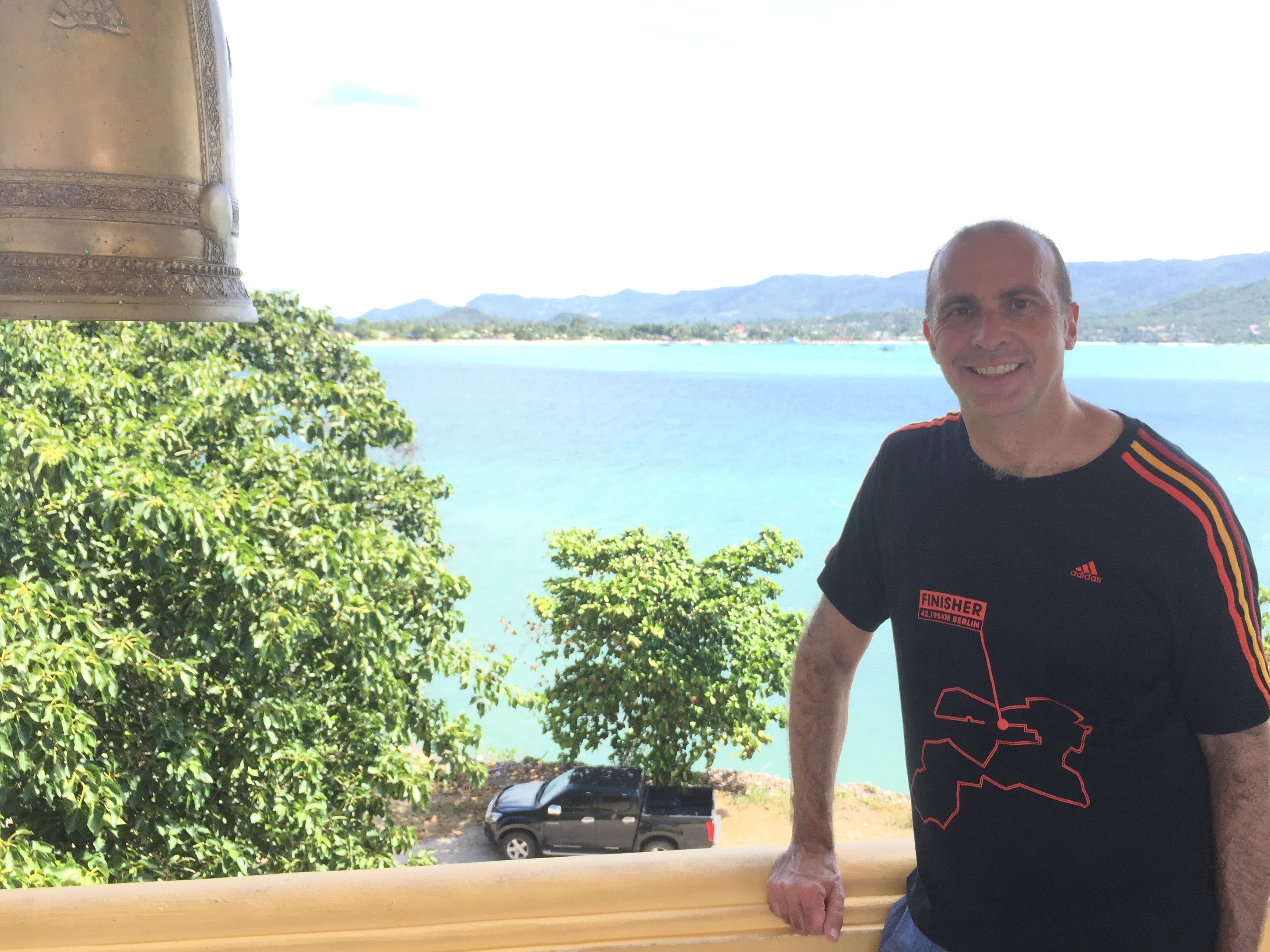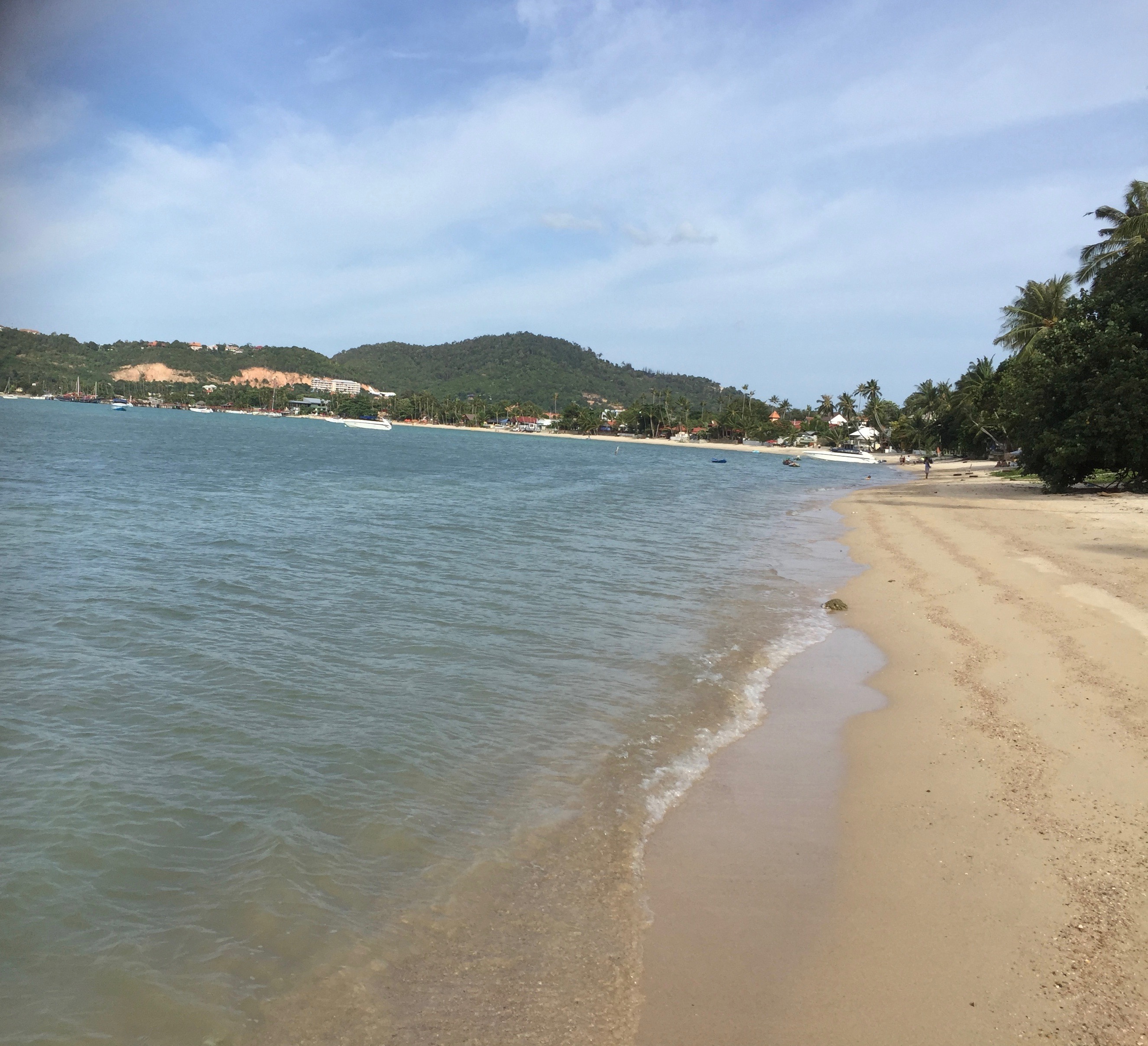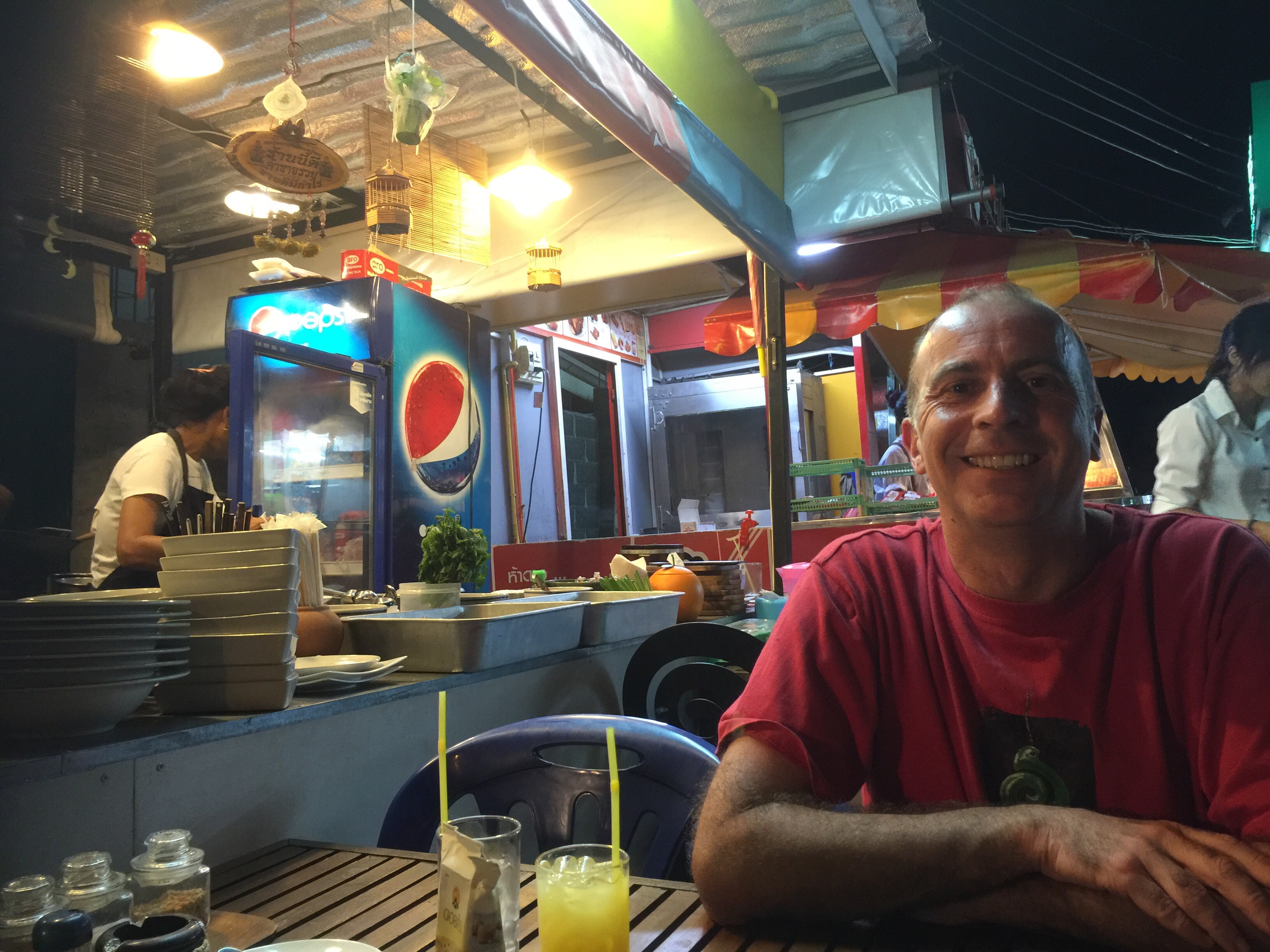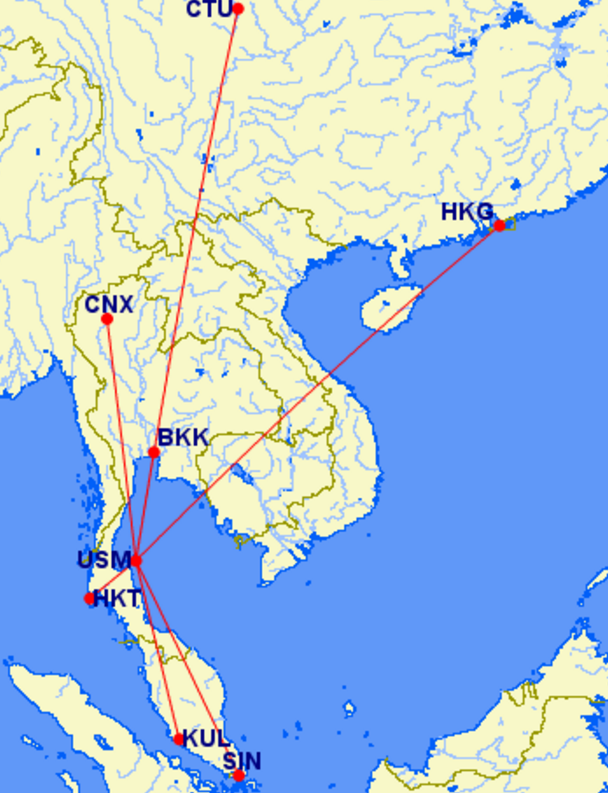I have been wanting to visit Koh Samui, Thailand’s second-largest island (after the famous Phuket) for ages. A spare weekend and a crazy desire to get to an airport that has a code starting with “U“ gave me the opportunity! Seriously! Like the other places I have visited, I have rated key aspects of the place.
We chose to stay in the Bo Phut area which is a quieter part of the island and includes one of the most popular tourist attractions: The Fishermans’ Village. The other popular tourist areas on the island:
- Chaweng with the most number of restaurants and the centre of island night life. Every “farang” (foreigner) will get here eventually.
- Lamai, the second largest resort area after Chaweng
- Bang Rak, another quieter area where a big Bhudda is located next to Bo Phut where we were staying and is the closest beach to the airport (pic below)

- Mae Nam is where most of the backpackers places can be found
- Nathon, the old state capital which is the major port for the inter-island ferries and fishing boats. This is where we arrived
Aesthetics: 88%
Located 35km off the Thai mainland, Koh Samui is the largest and most important island in the beautiful Chumphon Archipelago. Koh Samui is actually surrounded by over 60 other islands that make up the Mu Ko Ang Thong National Park. Two other popular tourist islands in the area are Koh Tao and Koh Pha Ngan. Koh means island in Thai and Samui
Measuring just 25km at its widest point, Koh Samui has an area of 228.7 km2, and a population of around 63,000. The usually calm waters are beautiful and warm to swim in all year around. The beaches are beautiful and the jungle is awe-inspiring. Hence why tourism is the island’s number one revenue earner. Rubber and coconuts are also large industries.
Until the 1970’s, the island had no roads and was isolated from the mainland of Thailand. Every settlement on the island is connected together by a single main road, which runs along the coast. The very centre of Koh Samui is almost completely uninhabitable due to a large jungle mountain, known as Khao Pom, which peaks at some 635 metres.

Liveability: 70%
The average top temperature on Koh Samui sits at over 30 degrees celsius for nine months of the year. The wettest months are October and November while the driest is February.
Koh Samui is much more expensive than the rest of Thailand. Restaurant and food prices are up to double those in Bangkok. For most foreigners, the prices are still very affordable, however.
I would give this paradise ten out of ten except the resulting development has created a haphazard visual montage with some beautiful resorts and some shockers! There is a massive (and growing) pollution issue. The sheer amount of trash floating in the sea is distressing. Plastic bottles compete with thousands of plastic bags and presumably are crowding out the fish. The island cannot keep up with garbage disposal and recycling is almost non-existent. The sewerage system is of concern and could devastate the local water life. Urgent action is needed.
Crime and Safety: 91%
Thailand is generally, a safe destination. Millions of people have trouble free holidays there annually. Usually “farangs” who get into trouble do something stupid.
Having said that, crime on Koh Samui is higher than in Bangkok. I think being sensible and taking precautions should mean a visitor is safe. There are reports of some scams on the island. We did not experience them.
There are four other potential dangers:
- Dengue Fever exists on Koh Samui
- Reports of people being bitten by the many stray dogs on the island. Samui, though, is largely rabies free but being attacked by a strange dog is not high on my list.
- There has been sightings of and stings from Box Jellyfish which is deadly.
- Thailand driving is often a challenge and the road safety tolls are very high compared to other nations. One contributing factor is caused by tourists who can drive recklessly, without helmets or seatbelts.
Culture and food: 66%
Beach activities, snorkelling, cruises are all available. This is the primary reason to come here. My Thai friends are very negative about what they feel is an inauthentic local culture on the island. They fear that most of the “cultural” activities on the island are “manufactured” for the “farangs“. For example. there are the usual suspects of Thai boxing which I confess I have never been to and Ladybiy shows (ditto). There is an obvious sex trade operating.
There are two cinemas on the island with films starting at $USD3 per person.
Many hotels will offer (legitimate) Thai massages and other spa services. Note that these premises will cost you three to five times the cost of independent spas outside the hotel.
Like everywhere else in Thailand, food options abound. Street stalls, Western take aways plus mainstream restaurants provide Thai and international foods are all available. 
The delicious Thai meal with drinks was just $US10 for two people. We also at our resort ($US5o for two including drinks) and at a restaurant in Chaweng ($US25).

A chocolate, coconut and banana roti from a street stall set me back $US1.50
Getting there and around: 60%
 There are two ways of getting to the island. The first is to fly into the island’s main airport from main centres across Asia including Bangkok, Chiang Mai, Hong Kong, Kuala Lumpur, Phuket and Singapore. The disadvantage is that Koh Samui airport is owned by Bangkok Airways. With a virtual monopoly on flights, fares are much bigher.
There are two ways of getting to the island. The first is to fly into the island’s main airport from main centres across Asia including Bangkok, Chiang Mai, Hong Kong, Kuala Lumpur, Phuket and Singapore. The disadvantage is that Koh Samui airport is owned by Bangkok Airways. With a virtual monopoly on flights, fares are much bigher.
The second is to catch a ferry from the mainland city of Surat Thani. This city is reachable by train from Bangkok, Hua Hin, Butterworth/Penang or Kuala Lumpur, bus from all over Thailand or air services with much lower prices from China, Malaysian and Thailand. The air-ferry connections worked very effectively for us. They
Whilst getting to Kph Samui is easy, public Transport around the island is not as convenient as some other parts of Thailand. Options include:
- Songthaews (song-taos), converted trucks with bench seats on the back which follow flexible (but slow) routes between the key spots on the island. Wave them down, state your destination, hop on board and pay when you hop off
- Taxis are way more expensive here than Bangkok and, in fact, for some distances are some of the most expensive I have seen in the world! Get your transfers included in your hotel rate. It is galling what tourists are charged to get around the island
- Scooter taxis which I have never used in Thailand as I have never been a fan of clutching a stranger whilst weaving between cars on winding roads!
Vibe: 92%
For chilling and relaxing, Koh Samui cannot be beaten. For those wanting partying, then the nightlife comes close to that of Phuket.
The Verdict: 78%
I rank Koh Samui as the 67th best place on the planet I have visited! For a relaxing time, it is great. If you want a deeper connection with real Thia culture, I would recommend Hua Hin or Chiang Mai as Thai holiday destinations.
Top Ten
-
Sit by the hotel pool and relax!
- Relax at the beach- throw in a massage!
- Walk around the coastline
- Fisherman’s Village
-
Temples: Big Buddha shrine- a 12 metre golden Buddha, Laem Sor Pagoda, Wat Rattanakosin and Wat Plai Laem, a colourful and interesting Buddhist Temple and the slighlty incomprehensible Mummified Monk at Wat Khunaram
- Markets: Chaweng Night Market next to the Chaweng Lake, the Chaweng Walking Street, Friday evening at the Fisherman’s Village and Sunday’s Lamai Walking Street which is probably the island’s best market.
- Jungle hike
- Tarnim Magic Garden or Secret Buddha Garden
There is also Grandmother and Grandfather rock which I will leave you to find out what they are about!!
Related Posts


I love Thailand, ko samui is my favorite place..